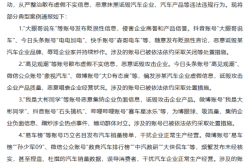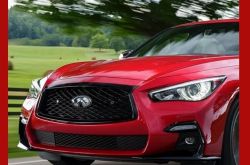Duan Yongping: Most New Energy Vehicle Enterprises Will Perish, Survival Uncertain
![]() 11/12 2025
11/12 2025
![]() 331
331
Text by Wang Xin
Art Design by Yang Lingxiao
Produced by Electric New Species
Recently, the well-known investor Duan Yongping stated in an interview program about the development of new energy vehicle (NEV) companies, "I'm certain that the majority of electric vehicles we see now will vanish. As for which ones will endure, I'm at a loss."
Duan Yongping drew on his experience in the gaming console industry as an illustration, stating, "I'm not sure how many companies are currently manufacturing electric vehicles, but it's akin to our time in the gaming console sector. There might have been hundreds of companies, and ultimately, only a handful survived and became profitable. The rest all went under."
This perspective isn't unique. A report by the consulting firm AlixPartners indicated that among the 129 brands selling electric and plug-in hybrid vehicles in the Chinese market today, only 15 will attain financial sustainability by 2030.
Several industry experts and business leaders concur that the new energy vehicle industry has entered a phase of elimination. While competition is intense, it's also propelling the industry towards high-quality development. A cluster of robust companies is accelerating their growth, scripting a new chapter for China's new energy vehicle industry.
01 The Elimination Round: A Necessary Step Towards Industry Maturity
The elimination round in the new energy vehicle industry isn't a sudden crisis but a necessary stage for any emerging industry transitioning from rapid growth to mature regulation.
In the early days, new energy vehicles drew significant capital and enterprise participation due to policy incentives and a vast market. At one point, there were as many as 137 new energy vehicle brands in the market. However, as the market expanded, competition intensified, and industry consolidation naturally ensued.
Duan Yongping's assessment is backed by data. The AlixPartners report reveals that the number of brands selling new energy vehicles in the Chinese market has declined from 137 in 2023 to 129 in 2025. Many of these brands have annual sales below 1,000 units, effectively withdrawing from market competition.
Meanwhile, the number of brands with sales exceeding 100,000 units continues to climb, indicating growing market concentration.
In the first half of 2025, China's new energy vehicle sales reached 6.937 million units, sustaining rapid growth while further enhancing industry concentration. Competition among companies has shifted from price wars to comprehensive competition in new products, technologies, and services.
This consolidation isn't accidental but an inevitable law of industry development. The automotive industry is a classic example of economies of scale. AlixPartners points out that by 2030, the surviving leading brands are projected to have an average annual sales volume of 1.02 million units. Some experts even suggest that automakers need to surpass 2 million units in annual sales to offset R&D, supply chain, and marketing costs.
Currently, a monthly sales volume of 50,000 units has become a critical threshold for new energy vehicle companies to survive. Companies failing to reach this scale will be at a disadvantage in cost control and technological research and development, making market elimination highly probable.
While the consolidation process is ruthless, it helps eliminate industry excess (bubbles) and focuses resources on high-quality enterprises. Similar to China's home appliance industry, which evolved from numerous brands to a few leading companies, the overall competitiveness of the industry has significantly improved.
The elimination round in the new energy vehicle industry is enabling truly technologically advanced, product-centric, and service-oriented companies to stand out, laying the groundwork for high-quality industry development.
02 The Key to Survival: Scale, Profitability, and Differentiation
Surviving the elimination round in the new energy vehicle industry requires more than just luck; it demands tangible strength. Scale, profitability, and differentiation have emerged as the three critical factors determining a company's survival. A group of companies has already achieved notable success in these areas through their efforts, setting examples for the industry.
Scale is the foundation for survival. Without sufficient scale, companies cannot reduce costs or gain a competitive edge in the fierce market.
BYD is undoubtedly a representative of scale advantage. In October 2025, BYD led the market with a wholesale sales volume of 436,856 units, outpacing second-place Geely Automobile by over 250,000 units. This large scale brings cost advantages, enhancing BYD's resilience in market competition.
In addition to BYD, traditional automakers such as Geely, SAIC-GM-Wuling, Changan, and Chery have also surpassed the 100,000-unit sales mark. Leveraging their accumulated supply chain and manufacturing advantages, they have secured significant positions in the new energy vehicle market.
Among the new forces, Leapmotor has joined the top tier with 70,289 units sold, while NIO has achieved stable growth, and XIAOMI Motors has delivered over 40,000 units. The scale effect is gradually becoming apparent.
Profitability is the core of sustainable development. As capital enthusiasm wanes, the era of relying on financing for growth has ended. Achieving self-sufficiency has become the only path for new energy vehicle companies to survive.
Currently, a group of companies has taken the lead in achieving profitability. Seres' preliminary earnings forecast for the first half of 2025 shows an estimated net profit attributable to shareholders of RMB 2.7–3.2 billion, with a non-GAAP net profit of RMB 2.23–2.73 billion. Li Auto reported revenue of RMB 25.9 billion and a net profit of RMB 647 million in the first quarter, while Leapmotor achieved a gross margin of 14.9% in the first quarter and turned a profit in the fourth quarter of the previous year.
These companies have achieved commercial viability by optimizing product structures, improving management efficiency, and controlling costs, setting profitability benchmarks for the industry. Leading new forces such as NIO have also set their profitability targets for the fourth quarter of 2025, aiming to achieve profitability.
Differentiation is the key to standing out. Duan Yongping believes, "Most electric vehicle businesses will encounter significant challenges. Tesla, overall, has excelled. With a limited number of models, a single product focus, and large-scale production, it achieves relatively low costs and is likely to be profitable."
In the Chinese market, differentiation strategies have also proven effective. BYD has adopted a dual-track approach in hybrid and pure electric vehicles, leveraging its technological advantages. Leapmotor insists on full-stack self-research, creating unique strengths in intelligence and cost control. NIO has developed a battery swap model to address range anxiety, while SERES has formed competitiveness in intelligent driving and smart cockpits with Huawei's technological support.
These companies have found their niche in the market by adopting differentiated positioning, avoiding homogeneous competition.
03 The New Energy Vehicle Industry's Positive Trajectory Remains Steady
Despite the fierce elimination round in the new energy vehicle industry, the overall positive trajectory remains intact. Rising penetration rates, significant export growth, and the industry's shift towards high-quality development are three positive signals highlighting the strong vitality and development potential of China's new energy vehicle industry.
The penetration rate of new energy vehicles continues to reach new heights, becoming the core driver of growth in the automotive market. In October 2025, the monthly sales of new energy vehicles in China exceeded 50% of total new vehicle sales for the first time, reaching 51.6%, a milestone event.
From a market segment perspective, the penetration rate of new energy vehicles among autonomous brands reached 77.9% in October, meaning nearly 8 out of every 10 vehicles sold by autonomous brands were new energy vehicles.
Globally, the penetration rate of new energy vehicles has shown rapid growth, reaching 13% in 2022, 16% in 2023, 19.5% in 2024, and 24.5% in the third quarter of 2025.
Leapmotor CEO Zhu Jiangming even predicts that within three to four years, new energy vehicles will largely replace fuel vehicles in China, and in ten years, all Chinese vehicles will be electric. The continuously rising penetration rate provides a broad market space for surviving new energy vehicle companies.
China's new energy vehicle exports have achieved explosive growth, becoming a significant force in the global new energy vehicle market.
In October 2025, China's new energy passenger vehicle manufacturers exported 250,000 units, a year-on-year surge of 104%, setting a new record for monthly exports. New energy vehicles accounted for 44.2% of passenger vehicle exports, up 16.6 percentage points year-on-year.
Among the export rankings, BYD performed exceptionally well, exporting 80,108 units in October, surpassing the combined total of the second and third-place companies. Chery, Tesla China, IM Motors, Geely, and other companies also ranked among the top ten exporters.
In recent years, China has contributed nearly 80% of the global increase in new energy vehicle sales. The Chinese market has become the core focus of global new energy vehicle competition, and Chinese new energy vehicles are leveraging their technological, cost, and scale advantages to expand globally.
The industry is shifting from 'price wars' to 'value wars,' with high-quality development becoming the main theme. Starting January 1, 2026, the purchase tax exemption for new energy vehicles will be adjusted from full exemption to a 50% reduction. This policy adjustment is considered a crucial step in driving the industry from 'price wars' to 'value wars.'
By setting technological thresholds, the policy guides the industry towards high-quality development, compelling automakers to increase investment in core technological R&D and focus on improving product quality, energy efficiency, and range capabilities.
Relevant national departments are also regulating competition in the new energy vehicle industry, strengthening cost investigations and price monitoring, enhancing product consistency inspections, and urging key automakers to fulfill payment term commitments.
Under the dual influence of policy guidance and market competition, the new energy vehicle industry is moving away from internal competition and towards a high-quality development track centered on technological innovation.
Conclusion: China's New Energy Vehicle Industry Advances Towards World-Class Status
Duan Yongping's judgment that "most new energy vehicle companies will perish, and it's uncertain which ones will survive" accurately highlights that the new energy vehicle industry is currently in a critical elimination phase.
This elimination round is a necessary path for the industry to transition from rapid growth to mature regulation. The prediction that only 15 out of 129 brands will achieve financial sustainability by 2030 underscores the fierceness of the competition.
To survive the elimination round, companies must possess three critical strengths: scale, profitability, and differentiation. Traditional automakers such as BYD, Geely, and Changan, along with new forces like Leapmotor and NIO, have already achieved notable success in these areas through their efforts, setting examples for the industry.
Despite the fierce competition, the overall positive trajectory of the industry remains unchanged. The new energy vehicle penetration rate has exceeded 50% for the first time, exports have doubled, and the industry is shifting towards high-quality development. These positive signals highlight the strong vitality of China's new energy vehicle industry.
The elimination round isn't the end of the industry but the starting point for the growth of high-quality enterprises. As competition intensifies, resources will further concentrate on high-quality companies, technological innovation capabilities will continuously improve, and product quality will keep optimizing. China's new energy vehicle industry will achieve upgrading through consolidation, giving rise to world-class enterprises with global competitiveness and continuing to lead the global new energy vehicle industry.






